9 Steps to Pruning Roses the Right Way
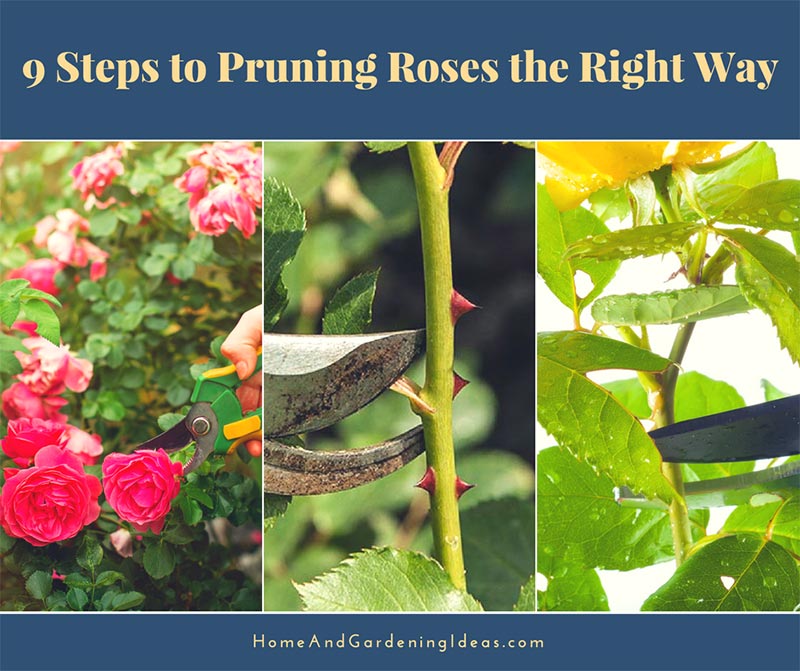
Pruning roses seem like a scary task for a new gardener, stopping many people from planting roses in their garden. Learning how to prune roses the right way is easier than you might expect. It takes time some time and practice, but it is hard to kill your rose bush from improperly pruning. You’ll try and do better the next pruning. Mistakes grow out, and it is better to try and make a mistake rather than not pruning at all.
Why Should You Prune Roses?
Pruning your roses shouldn’t be optional. If you want a trimmed and proper looking rose bush, pruning is an essential task.
- Shapes the plant
- Improves air circulation
- Encourages new growth and blooms
- Removes dead wood
- Reduces diseases
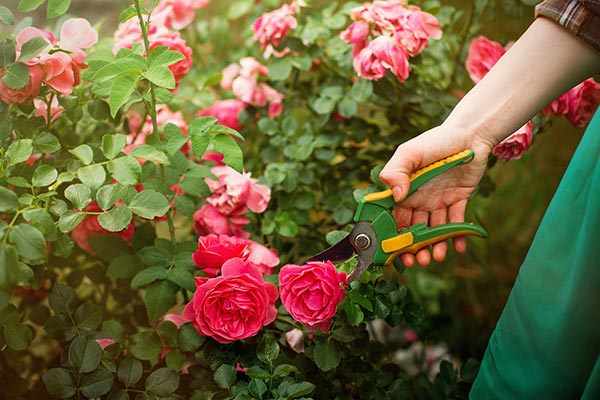
When Should You Prune Roses?
You should determine when to prune your rose bushes based on the type and your hardiness zone. Most of the time, your pruning should be done in the spring. If you notice forsythia blooming, it is time to get pruning! Another sign that it is pruning time is when the leaf buds start to swell on your plant. The bumps on the canes begin to grow and turn reddish.
Pruning needs to be done before the buds start to open. Buds start to open once the threat of frost ends, so check your zone to find the last frost date for your area. For cold climates, that can be between January and May.
The type of roses matters as well.
Repeat Bloomers: Hybrid Tea, Grandiflora, Floribunda, and Polyantha are repeat bloomers, and they should be pruned in the later winter or early spring.
Single Bloomers: Antique roses and shrub roses fall into this category. Prune these bushes after they are done blooming in the late spring or summer.
Tools You Will Need
- Thick Gloves
- By-Pass Pruners
- Long-Handled Loppers
- Alcohol, Bleach or Hydrogen Peroxide for cleaning tools
- Wood Glue
How to Prune Roses the Right Way
Prepare Your Tools
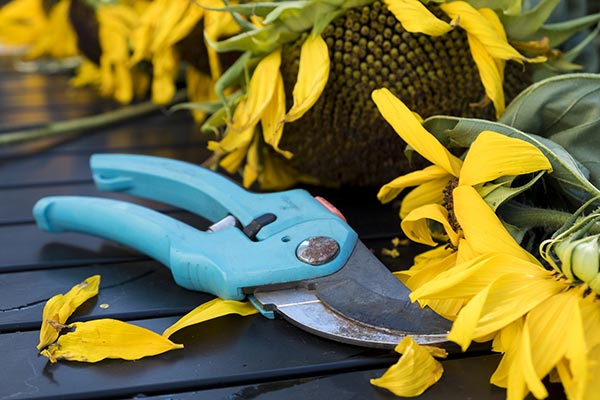
Before you start to prune your roses, prepare your tools. Sharpen your pruners and loppers, so the cuts are easy and smooth. Make sure to clean and sanitize your tools to avoid transferring diseases from plant to plant.

Clean Away All Debris
Look around all of your rose bushes, and clear away grass and leaves. Debris can harbor insects and diseases that could be lethal for your plants. You can add helpful, new mulch later to the area. While you can do this with your hands, a hand rake makes your life easier. There will be plenty of thorn down there. Be careful around the base of your plant so that you don’t damage any growing buds.
Also, make sure to remove all of the foliage and cuts that you make while pruning. Don’t leave those dead and diseased twigs on the ground afterward!
Remove the Foliage
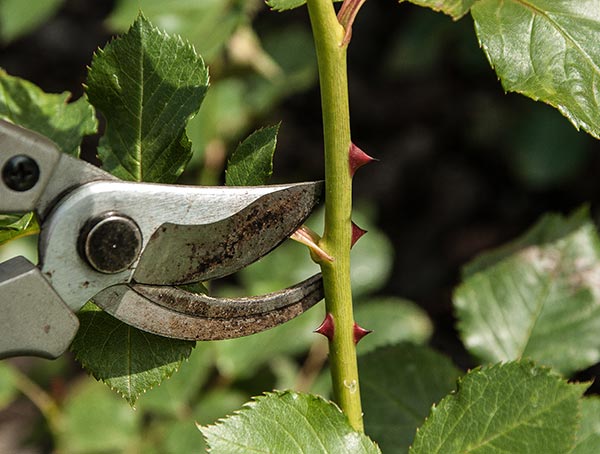
You need to see the structure of the rose bush, so remove all of the foliage. That means you should prune either in the spring before the plant comes out of dormancy or remove all of the foliage by hand.
Cut Horizontal Canes
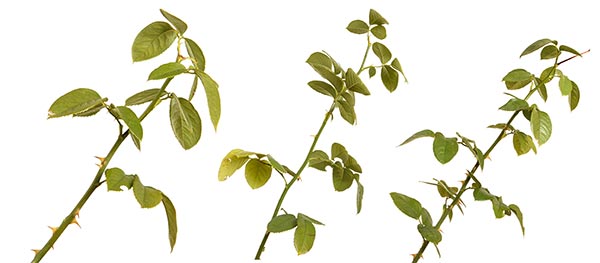
First, you need to remove any canes and branches that are growing horizontally. Check to see if any are growing in towards the center of the bush or crossing over another cane. Always start at the base of your plant when you start to prune to keep the overall shape and health of the plant.
Remove Diseased and Dead Material
The next step is to cut off all the canes that are diseased or dead. You can check the center of the cane to determine its health. A brown or black center means that the branch is dead. A green center shows that the branch is healthy. You don’t want to keep green canes that are on old, dead branches. Only keep green canes that are on a healthy branch!
Removing all of the dead and diseased material stops diseases from spreading further and encourages air flow around the bush. You also want to remove any weak or twiggy branches that are thinner than a pencil.
Prune Down Remaining Canes to Outward Bud
After you removed all of the dead, diseased branches and horizontal cuts, there should be six to eight strong, vertical canes. Cut these canes down to a height of 18 to 24 inches. Doing so encourages continuous growth and blooming. Find an outward facing bud on each cane and trim to just above that bud.
Remember to Cut at 45-Degree Angle
When you are pruning your rose bush, all of your cuts should be made at a 45-degree angle. This angle encourages water to drain away from the bud, which prevents rot and diseases. Ensure the cut surface is smooth. One key to ensuring this happens is keeping your pruners sharp.
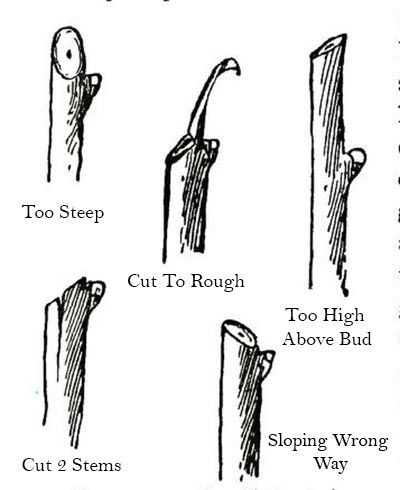
Aim for a Vase Shape
You want an open-centered bush when you are finished pruning, creating a natural vase shape. Your bush can be wide or narrow, depending on your plant. Creating this shape isn’t always possible, but try your best to aim for it. After pruning, you should have healthy stems with an open center.
Apply Wood Glue
The last step is optional. You can add wood glue to the ends of your cuts. Sealing the cuts is a good idea if your area has frequent pest problems. The glue will stop rose boring insects from invading and infecting your plant.
Pruning is an essential part of rose bush maintenance. Each spring, you should mark it in your planner as a task that needs to be completed. The rewards are worth your effort. You’ll notice a fuller rose bush with a multitude of blooms – your picture-perfect plant.
Thankfully, rose bushes are forgiving of new gardeners. If you happen to make a few mistakes while pruning, your bush will be ok. After a few tries, you will understand what you are doing, and your rose bushes will look better than ever before!
 Home and Gardening Ideas At home and Gardening ideas we believe inspiring readers about homesteading, self sufficiency
Home and Gardening Ideas At home and Gardening ideas we believe inspiring readers about homesteading, self sufficiency





